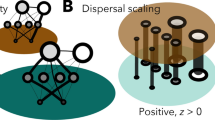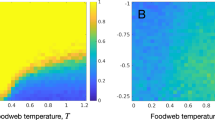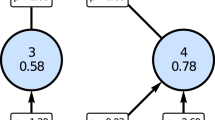Abstract
Mathematical models1–3, field observations4,5, and laboratory studies6 all suggest that habitat patchiness (or 'fragmentation') profoundly affects species interactions. One especially widely cited idea is that patchiness stabilizes predator–prey dynamics7,8. I performed the first test of this idea in a natural community by experimentally manipulating the degree of patchiness in goldenrod fields that were the setting for a predator–prey interaction between ladybird beetles and aphids. Contrary to conventional wisdom, I found that increasing patchiness led to more frequent local explosions of aphid populations and thus less stable dynamics. These results can be understood by examining the effects of patchiness on the searching and aggregation behaviour of ladybird predators. It appears that the effects of habitat fragmentation depend on the specific behaviour of the organisms using the habitats. Thus, instead of making robust generalizations about habitat fragmentation (such as "patchiness is stabilizing") we should seek predictions that are based on the details of an organism's dispersal behaviour and demography9.
This is a preview of subscription content, access via your institution
Access options
Subscribe to this journal
Receive 51 print issues and online access
$199.00 per year
only $3.90 per issue
Buy this article
- Purchase on Springer Link
- Instant access to full article PDF
Prices may be subject to local taxes which are calculated during checkout
Similar content being viewed by others
References
Hastings, A. Theor. Populat. Biology 12, 37–48 (1978).
Levin, S. A. Rev. ecol. Syst. 7, 287–310 (1976).
Maynard Smith, J. in Models in Ecology, 69–83 (Cambridge University Press, 1974).
Elton, C. J. Ecol. 37, 1–23 (1949).
Hanski, I. & Ranta, E. J. Anim. Ecol. 52, 263–279 (1983).
Huffaker, C. B. Hilgardia 27, 343–383 (1958).
Begon, M., Harper, J. & Townsend, C. in Ecology, 337–339 (Sinauer, Massachusetts, 1986).
May, R. J. Anim. Ecol. 47, 833–843 (1978).
Hassell, M. & Ma, R. in Behavioural Ecology (eds Sibly, R. & Smith, R.) 137–154 (Blackwell, Oxford, 1985).
Kareiva, P. Lect. Notes Biomath. 54, 368–389 (1984).
Kareiva, P. in Community Ecology (eds Diamond, J. & Case, T.) 196–206 (Harper & Row, New York, 1985).
Kareiva, P. & Odell, G. Am. Nat (in the press).
Hassell, M. & Ma, R. J. Anim. Ecol. 43, 567–594 (1974).
Heads, P. & Lawton, J. Oikos 40, 267–276 (1981).
Wilcox, D., McClellan, C. & Dobson, A. in Conservation Biology (ed. Soule, M.) 237–256 (Sinauer, Massachusetts, 1986).
Pickett, S. & Thompson, J. Biol. Cons. 13, 27–37 (1978).
Author information
Authors and Affiliations
Rights and permissions
About this article
Cite this article
Kareiva, P. Habitat fragmentation and the stability of predator–prey interactions. Nature 326, 388–390 (1987). https://doi.org/10.1038/326388a0
Received:
Accepted:
Issue Date:
DOI: https://doi.org/10.1038/326388a0
This article is cited by
-
Light pollution and habitat fragmentation in the grey mouse lemur
Scientific Reports (2024)
-
A new fractal index to classify forest fragmentation and disorder
Landscape Ecology (2023)
-
The Genus Thionia Stål, 1859 (Hemiptera: Auchenorrhyncha: Issidae) in Colombia: Highlighting the Value of Entomological Collections
Neotropical Entomology (2022)
-
Endogenous spatial heterogeneity in a multi-patch predator-prey system: insights from a field-parameterized model
Theoretical Ecology (2021)
-
Hidden Markov Models reveal a clear human footprint on the movements of highly mobile African wild dogs
Scientific Reports (2020)
Comments
By submitting a comment you agree to abide by our Terms and Community Guidelines. If you find something abusive or that does not comply with our terms or guidelines please flag it as inappropriate.



